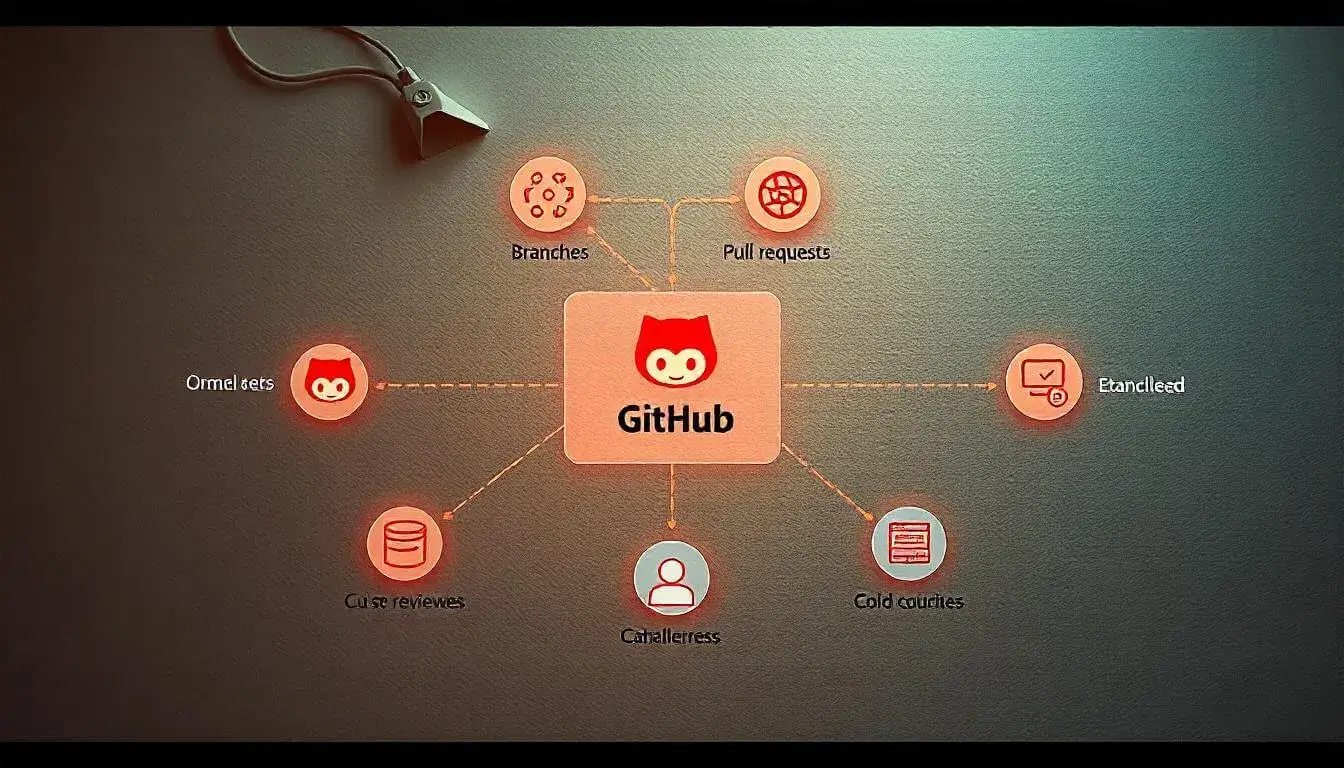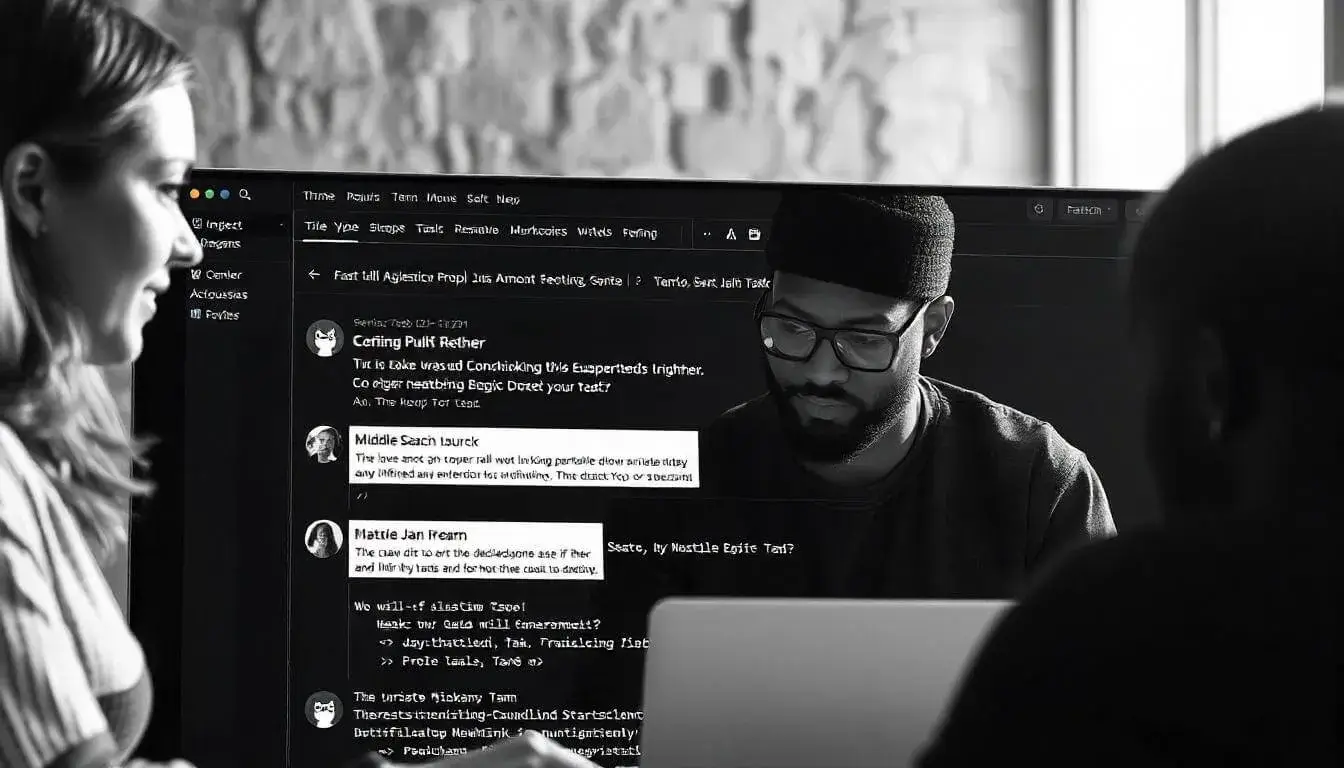Best Practices for Collaborative E-commerce Development on GitHub

Collaborating on an e-commerce development project with multiple team members can be challenging. GitHub provides tools that make it easier to work together, manage code, and ensure smooth development. In this guide, we’ll cover best practices for organizing a GitHub repository, managing branches, handling pull requests, and conducting code reviews.
Why Use GitHub for E-commerce Projects?
GitHub makes collaborative development efficient by providing version control, easy code management, and features for seamless teamwork. Using GitHub for your e-commerce project allows your team to work on different parts of the project without conflicts, review each other’s code, and keep a history of all changes.
Step 1: Organize Your Project Repository
Organizing your GitHub repository is essential for a clear and efficient workflow. Here’s how to structure it effectively.

- Create Clear Directories
- Organize files into folders like frontend, backend, assets, and documentation.
- Each folder should have files that logically fit together. For example, place all CSS and JavaScript files in the frontend folder, while backend logic goes in the backend folder.
- Add a README File
- The README is the first thing people see. Include the purpose of the project, installation steps, usage instructions, and any essential notes.
- Write simple and clear instructions to help new team members get started quickly.
- Create a
.gitignoreFile- Use a
.gitignorefile to avoid committing unnecessary files, like temporary files or environment configurations, which can clutter your repository. - GitHub provides templates, so you can easily find
.gitignoreoptions suited for your technology stack.
- Use a
Step 2: Use Branches for Development
Branches allow team members to work on different parts of the project without interfering with each other’s work.
- Main Branch (e.g., main or master)
- The main branch is the stable version of your project. Only tested, completed features should be merged here.
- Limit who can directly push changes to this branch to avoid accidental modifications.
- Feature Branches
- Create a new branch for each feature or bug fix (e.g.,
feature-product-pageorbugfix-login-error). - This approach keeps the main branch clean and lets you work on different features at the same time.
- Create a new branch for each feature or bug fix (e.g.,
- Naming Conventions
- Use clear, consistent names for branches, like feature-, bugfix-, or hotfix-. For example, feature-checkout-page.
- This makes it easy for the team to understand the purpose of each branch.
Step 3: Manage Pull Requests (PRs)
Pull requests are essential for reviewing and merging code from feature branches into the main branch.
- Create a Pull Request for Each Feature
- When your feature is complete, open a pull request (PR) to merge your feature branch into the main branch.
- Add a clear title and description that explains the purpose of the PR and any relevant details.
- Request Reviews
- Tag team members to review your code. GitHub allows you to request specific people for code reviews.
- Reviewers should look for potential issues, suggest improvements, and confirm that the code follows the team’s standards.
- Use Labels and Assignments
- Use labels like
bug,feature, orenhancementto indicate the purpose of each PR. - Assign the PR to a team member responsible for approving or merging it.
- Use labels like
Step 4: Conduct Code Reviews
Code reviews help maintain high-quality code and ensure everyone understands what’s being added or changed in the project.

- Review Carefully
- When reviewing, check for code consistency, readability, and potential bugs.
- Confirm that the code works as expected by running it on your local machine, if possible.
- Leave Constructive Feedback
- Provide comments that are helpful and clear. Instead of just pointing out an issue, suggest a solution.
- If there are major issues, kindly request changes and provide an explanation.
- Approve and Merge
- Once the code meets the project’s standards, approve the PR.
- After approval, the person responsible (or the team lead) can merge the branch into the main branch.
Step 5: Use GitHub Issues and Project Boards for Task Management
GitHub Issues and Project Boards are helpful tools for tracking tasks, bugs, and project progress.
- Create Issues for Each Task
- For each feature or bug, create an issue. This way, the team has a clear view of what needs to be done.
- Assign issues to team members based on their roles and skills.
- Use Project Boards
- Use GitHub’s project boards (like Kanban boards) to organize issues into categories, such as
To Do,In Progress, andDone. - This helps everyone track progress and see who’s working on what.
- Add Milestones
- Set up milestones for each major project phase (e.g., “MVP Launch” or “Feature Update 1”).
- Milestones help keep the team on track and give everyone a sense of progress toward larger goals.
Step 6: Keep Documentation Updated
Clear documentation makes it easier for team members to understand the project and onboard new developers.
- Update the README with New Features
- When adding new features, update the README with any relevant information.
- Include details on how to use or test the new feature.
- Document Code in Files
- Use comments within the code to explain complex functions or important logic.
- This will help future developers understand the code better.
- Use a CONTRIBUTING.md File
- If your project is open-source or if you have a large team, add a CONTRIBUTING.md file.
- This file should contain guidelines on how team members can contribute, such as branching rules, PR guidelines, and testing requirements.
Conclusion
By following these best practices, you can set up a well-organized, efficient e-commerce development workflow on GitHub:
- Organize Your Repository: Keep files in logical folders and write clear README instructions.
- Branch Management: Use feature branches and naming conventions to keep development organized.
- Pull Requests and Reviews: Use pull requests for all new features, request reviews, and give constructive feedback.
- Use Issues and Project Boards: Track tasks, assign issues, and use project boards for easy project management.
- Maintain Documentation: Keep README, inline code comments, and guidelines up to date.
With these strategies, your team can collaborate smoothly and develop a high-quality e-commerce site together on GitHub!
Related Posts
Automating E-commerce Testing with GitHub Actions and Selenium Is Taobao Safe? What You Need to Know Before Buying Using GitHub Actions for E-commerce SEO Audits How to Use GitHub’s Community Features to Gather Feedback on E-commerce Features Taobao Payment Failed? 5 Common Reasons and How to Fix Them